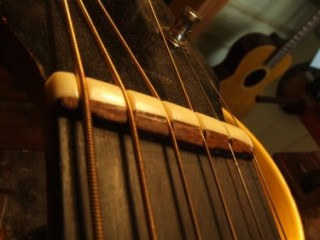From time to time you may notice your guitar will start to buzz when fretting. Mostly, this will occur between frets 7-9 or above the 12th. You may take it to a repairer and have them tell you it needed a “fretdress”.
Not wanting to sound uneducated you enthusiastically agree. To which they take your guitar and walk into their back room ne’er to divulge their practice.
Of course you pick it up and then faint at the bill.
A fretdress, is a solution to the problem of uneven frets. Sometimes (due to a wide variety of factors, ranging from humidity to climate to tension over time etc etc) the neck will sweep into an: (more…)


